- Company
- Historic Milestones
Company History
The Caparol Milestones
In 2010 the Deutschen Amphibolin-Werke von Robert Murjahn celebrated 115 years since its foundation.
Originally founded to mine the mineral amphibole (hornblende/ greenstone slate), the company developed into a manufacturer of coating materials for the construction sector. These materials were initially powder products made from mineral pigments, fillers and the binders chalk/casein ("Murjahn's Coating Powder") and then also from size and water glass, a form of sodium silicate. Later, primarily due to the life's work of Dr. Robert Murjahn, the technology of synthetic dispersion binders shifted into the focus of the product research.
In this field the company assumed the role of a specialist and pioneer, a role which it holds today. Above all the aqueous universal paint binder "Caparol" (Casein, Paraffin, Oleum) - later using synthetic dispersion as the basic raw material instead of oil - became very popular with German painters and decorators.
The following traditional brands should be mentioned as further milestones: The facade paints "Amphibolin", "Muresko" and "AmphiSilan", the interior paints "Alpinaweiß", "Malerit" and "Indeko-plus" as well as numerous specialties and the well-known tinting materials "Alpinacolor" and "AVA".
1885
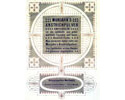
Ernst Murjahn and his son Eduard of the Hamburg export and import trading company "Ernst Murjahn & Son" acquire rights for mining manganese in the Odenwald region of Germany. In the following soil analysis Eduard Murjahn stumbles on hornblende, an important mineral of the amphibole group.
1889
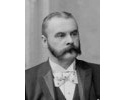
Eduard Murjahn concludes on behalf of "Ernst Murjahn & Son" the first mining contracts for working mineral deposits and finds a method of refining the amphibole that has been found. In 1889 in Ernsthoften/Odenwald he founds the "Deutschen Amphibolin-Werke von Eduard Murjahn" and then begins with the manufacture of paint and plaster powder and rust-protection paints.
1894
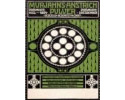
Robert Murjahn, son of Eduard Murjahn, develops a plaster powder paint based on lime and chalk. In 1894 the powder receives an honorary diploma at an exhibition in Kiel and is awarded a gold medal.
1895
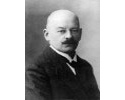
Founding of the company "Deutsche Amphibolin-Werke von Robert Murjahn" in Ober-Ramstadt by the son of Eduard Murjahn. Manufacture of plaster powder paint and "Murjahn's Coating Powder".
1926

The 24-year-old Dr. Robert Murjahn, the founder's son, joins the company.
1928
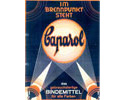
Dr. Robert Murjahn develops the aqueous dispersion binder "Caparol" with the aid of which the decorator can produce the required paint himself from pigments and fillers. The brand name is derived from the first letters of the three constituents casein, paraffin and Chinese wood oil (oleum). The new product introduces dispersion binder technology into the painting trade.
1936
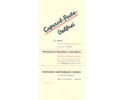
Dr. Robert Murjahn employs for the first time an acrylic dispersion in his Caparol binder instead of oil. The "Caparol Oil-Free Paste" signifies the beginning of modern dispersion paint technology.
1953
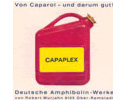
Market launch of the "Capaplex" gloss coating agent.
1954
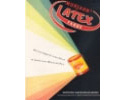
With "Murjahn's Latex Paint" the first ready-to-use dispersion latex paint was launched onto the market.
1956
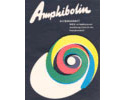
A dispersion paint based on vinyl propionate is marketed under the traditional name of "Amphibolin".
1957
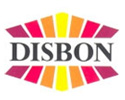
Gründung der Disbon GmbH, Ober-Ramstadt.Founding of Disbon GmbH, Ober-Ramstadt. As a packaging innovation the 1-kg plastic tube for the AVA colorants is introduced. Forming a dough with the powder paint pigments is no longer necessary with the widespread use of the AVA tinting paints.
1959
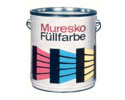
A redeveloped dispersion filler paint comes onto the market under the traditional brand name of "Muresko".
1963
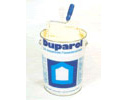
Introduction of the polymer resin facade paint "Duparol". With "Disbon 400", Disbon presents one of the first officially approved oil blockers.
1973
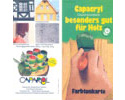
Market launch of the acrylic enamel "Capacryl".
1976
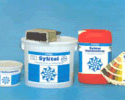
A modernised range of silicate paints is introduced under the brand name "Sylitol".
1978
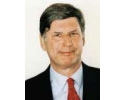
After the death of Dr. Robert Murjahn, his son Dr. Klaus Murjahn who has been a director since 1973, takes over the management of the DAW.
Market introduction of the automated tinting system "Capamix" for paints, enamels and renders/plasters.
1981
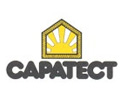
Founding of Capatect Dämmsysteme GmbH & Co. Energietechnik KG, Ober-Ramstadt. Capactect markets thermally insulating composites and render/plaster systems.
1984
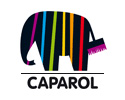
The striped elephant becomes the new company logo for Caparol.
1985
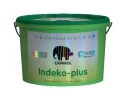
Presentation of internationally the first emission-minimised, plasticizer and solvent-free interior paint – "Indeko-plus E.L.F." (emissions- minimierten und lösemittelfreien)
1987
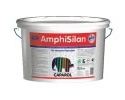
With "AmphiSilan", a rain-repellent, but highly diffusion-active facade paint is brought onto the market.
1989
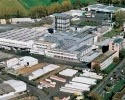
Founding of Caparol Farben GmbH & Co KG.
The "Deutschen Amphibolin-Werke von Robert Murjahn" becomes the holding company. The marketing companies of DAW are: Caparol, Capatect, Disbon and Alpina.The group achieves for the first time a turnover of over € 250 million.
1993
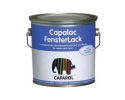
Introduction of the Capalac range of enamels and glazes.
1999
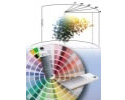
Premiere and introduction of the pioneering colour shade collection "Caparol 3D System for building paints".
2003
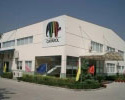
Premiere and introduction of the pioneering colour shade collection "Caparol 3D System for building Founding of Caparol Shanghai with its own production for the Chinese market.
Restructuring of the Caparol Business Units.
2004
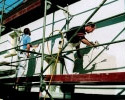
Market launch of Muresko, the new class of facade paint based on SilaCryl®.
Market launch of the Nespri-TEC® System for mist-free spray coating of facades.
2005
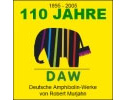
DAW celebrates its 110-year company anniversary.
Market launch of the Caparol wellness paints CapaSan (interior paint with photocatalytic effect) and ElectroShield (primer for protection against electromagnetic radiation).
The Nespri-TEC® System receives the "Federal Prize 2005 for outstanding innovative services to the trade".
2007
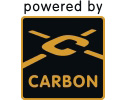
At the exhibition “Farbe – Ausbau & Fassade” in Cologne the product innovation “Edition Carbon” is introduced. The Edition Carbon represents the new generation of external wall insulation that is especially shock-resistant and durable due to its carbon fiber reinforcement.
2008
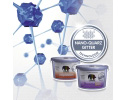
Introduction of a new generation of façade paint, based on the Nano-quartz-matrix technology. This new formula further reduces the adherence of dirt particles and keeps the facades clean even longer. ThermoSan and AmphiSilan are now the high-tech façade paints on the market.
2010
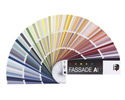
At the exhibition “Farbe – Ausbau & Fassade” in Munich the innovative color collection “FASSADE A1” is introduced. The 500 colors of the color fan have especially been selected for façades and offer the highest color stability.
2012
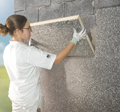
The high performance S024 Insulation Board is introduced and sets new benchmarks in thermal insulation.
2013
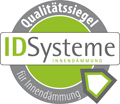
Market launch of the capillary active Capatect Interior Insulation Systems "IDS Aktiv and IDS Mineral" with the novel IDS Thermowinkel (thermal bracket).
2014

Natural insulation – using sustainable raw materials.
The ecological insulation system made from hemp fibres has received multiple awards in Germany and Austria for its innovation and environmental compability.
2015
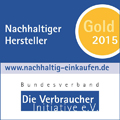
The brands Caparol and Alpina are being awarded by the Verbraucher Initiative e. V. (consumer initiative association) with a gold award as “sustainable manufacturer” which is the highest prize for social and ecological commitment.
2015
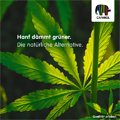
The ecological insulation variant - hemp insulates greener. The innovative hemp facade insulation system from Caparol combines the best qualities in building physics and ecology.




